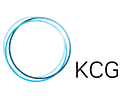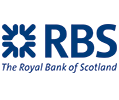How Does Algorithmic Trading Work?
Algorithmic trading, also known as algo trading or automated trading, is reshaping the financial markets by leveraging technology to execute trades with speed, accuracy, and efficiency. Traders and institutions alike rely on algorithms to streamline trading processes, minimize human error, and optimize profitability.
Let’s break down how algorithmic trading works, its key components, and why it’s a game-changer in modern finance.
What is Algorithmic Trading?
Algorithmic trading is the use of computer programs and algorithms to execute financial trades. These algorithms are pre-programmed with a set of instructions, such as timing, price, quantity, and conditions, allowing trades to occur automatically without manual intervention.
The beauty of algorithmic trading lies in its precision and speed—algorithms can analyze vast datasets and execute trades within milliseconds, a feat impossible for human traders.
How Algorithmic Trading Works
1. The Core Components of Algorithmic Trading
- Predefined Rules: Algorithms are based on rules and strategies, such as price thresholds, moving averages, or volatility levels.
- Market Data Input: Algorithms analyze real-time data feeds to identify trading opportunities.
- Execution Logic: Once conditions are met, the algorithm automatically executes trades without human interference.
2. The Trading Process
- Market Scanning: Algorithms monitor multiple instruments across markets simultaneously, analyzing trends and patterns.
- Decision-Making: Based on the programmed strategy, the algorithm determines whether to buy, sell, or hold.
- Trade Execution: Trades are placed with lightning speed, often in fractions of a second.
- Post-Trade Analysis: Algorithms evaluate performance to refine future strategies, ensuring continuous optimization.
Common Strategies in Algorithmic Trading
- Trend-Following Strategies:
Algorithms use technical indicators, like moving averages or momentum oscillators, to detect and follow market trends. - Arbitrage Opportunities:
Algo trading identifies price discrepancies across exchanges, buying in one market and selling in another for profit. - Mean Reversion:
This strategy assumes prices will revert to their historical average, prompting buy or sell actions when prices deviate significantly. - High-Frequency Trading (HFT):
HFT leverages ultra-fast algorithms to execute large volumes of trades in milliseconds, exploiting minuscule price differences. - Volume-Weighted Average Price (VWAP):
VWAP strategies focus on executing large trades gradually to avoid market disruptions and optimize trade prices.
Advantages of Algorithmic Trading
- Speed and Efficiency: Algorithms execute trades faster than any human trader.
- Reduced Emotions: Automation eliminates human bias, ensuring consistent strategy execution.
- Backtesting Opportunities: Algorithms can be tested against historical data to assess their effectiveness before live deployment.
- Increased Market Access: Algorithms can trade across multiple markets simultaneously, capturing global opportunities.
Challenges in Algorithmic Trading
Despite its advantages, algo trading isn’t without challenges:
- Technical Glitches: Errors in coding or unexpected market conditions can lead to losses.
- Over-Optimization: Excessive tweaking based on past data may reduce performance in live markets.
- Regulatory Compliance: Algorithms must adhere to strict market regulations to prevent manipulative trading practices.
Algorithmic trading has revolutionised the financial markets by making trading faster, more efficient, and data-driven. Adopting algorithmic trading strategies can unlock new levels of profitability and precision for traders looking to stay competitive.
Ready to explore the possibilities of algorithmic trading? FXCG offers the tools and resources you need to succeed in today’s dynamic market.
before: Holiday Trading Hours(February)



















